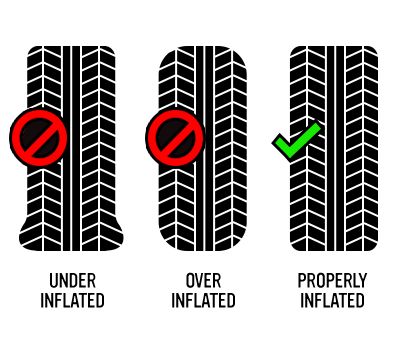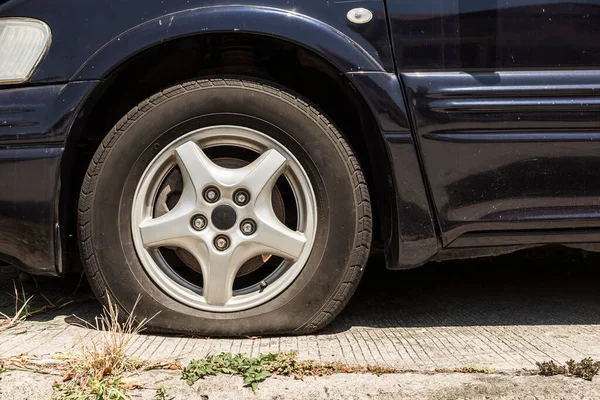Tire pressure increases as tires heat up because the air inside expands with rising temperature. For every 10°F increase, pressure can rise by 1-2 psi. This affects handling, safety, and fuel efficiency, so it’s important to check tire pressure when the tires are cold.
When driving, it’s essential to pay attention to various factors that can affect your vehicle’s performance, safety, and efficiency. One of the most important yet often overlooked aspects is tire pressure. While many drivers ensure that their tire pressure is optimal before hitting the road, what they may not realize is that tire pressure changes while driving—particularly, it increases as the tires get hot.
In this blog post, we will delve into the science behind this phenomenon, its effects on driving, and best practices for maintaining optimal tire pressure.

Contents
Why Does Tire Pressure Increases as the Tires Get Hot?
The increase in tire pressure as tires heat up is rooted in the basic principles of physics, particularly the ideal gas law. This law states that the pressure of a gas is directly proportional to its temperature, assuming the volume of the gas remains constant. For tires, which are filled with air (or nitrogen in some cases), this means that as the air inside the tire gets warmer, the pressure increases.
The Physics Behind It: Ideal Gas Law
The ideal gas law is expressed as:
PV=nRTPV = nRTPV=nRT
Where:
- P = Pressure
- V = Volume
- n = Number of moles of gas
- R = Universal gas constant
- T = Temperature (in Kelvin)
In the context of a tire, the volume (V) is relatively constant because the tire’s structure doesn’t change much during normal operation. However, as the temperature (T) increases, so does the pressure (P) because the gas molecules inside the tire start moving faster and colliding with the tire walls more frequently.
When you drive, friction between the tires and the road generates heat, which warms the air inside the tires. Additionally, environmental factors like outside temperature and direct sunlight can also cause the tires to heat up, further increasing the pressure inside them.
How Much Can Tire Pressure Increase?
On average, tire pressure can increase by about 1-2 psi (pounds per square inch) for every 10 degrees Fahrenheit (5.6°C) rise in temperature. For example, if your tires are set at 32 psi when cold, and the outside temperature increases from 60°F to 80°F, the pressure inside the tires could increase by 2-4 psi.
The increase could be even more significant after driving for extended periods or at high speeds, especially on hot asphalt, where tire temperatures can rise dramatically.
Effects of Hot Tires on Driving
Hot tires can significantly impact driving performance and vehicle safety. Here are some key effects to consider:
1. Increased Tire Pressure
As tires heat up, the air inside expands, causing tire pressure to increase. Overinflated tires reduce the contact patch with the road, leading to:
- Reduced grip and traction, especially in wet or slippery conditions.
- Uneven tire wear, which can shorten the tire’s lifespan.
- Increased risk of blowouts, as the tire walls may not withstand the extra pressure.
2. Altered Handling and Braking
Hot tires can affect how your vehicle handles:
- Decreased handling precision due to the tires becoming less flexible as they expand.
- Longer stopping distances as the traction decreases from reduced contact with the road.
- Increased understeer or oversteer, particularly when cornering at high speeds.
3. Faster Tire Wear
When tires heat up, the rubber compounds break down faster. This leads to:
- Accelerated tread wear, particularly on hot pavement, which can compromise tire longevity.
- Loss of tire performance, as heat cycling can harden the rubber, reducing flexibility and grip.
4. Increased Risk of Hydroplaning
With hotter tires expanding and causing reduced tread depth in some areas, the vehicle may become more prone to hydroplaning. This is especially dangerous in wet weather when water can’t be displaced as efficiently.
5. Reduced Fuel Efficiency
Higher tire pressures and decreased grip can result in:
- Increased rolling resistance, causing the engine to work harder, which reduces fuel economy.
6. Risk of Tire Blowout
Prolonged high-speed driving or driving in hot climates can cause the tires to overheat, increasing the risk of a blowout, particularly if tires are already worn or under-maintained.
7. Thermal Expansion
Tires are made from various materials that expand differently when heated, leading to potential imbalance in the tire’s structure. This can cause vibrations, further compromising the vehicle’s stability.

Managing Tire Pressure in Hot Conditions
Managing tire pressure in hot conditions is crucial for maintaining safety, performance, and the longevity of your tires. Here’s how you can properly manage tire pressure during hot weather:
1. Check Tire Pressure When Cold
Check tire pressure when the tires are “cold,” meaning the vehicle hasn’t been driven for at least three hours, or it has been driven less than a mile at low speed. This gives you an accurate reading of the tire’s baseline pressure before it heats up from friction with the road.
Most manufacturers recommend a specific tire pressure range that is based on cold tire measurements. This number is usually found on a label inside the driver’s door frame or in the vehicle’s owner’s manual.
2. Adjust for Temperature Fluctuations
Be mindful of the outside temperature when adjusting tire pressure. For every 10°F change in temperature, the tire pressure will change by 1-2 psi. Therefore, if you inflate your tires in the morning when it’s cool, but the temperature increases significantly throughout the day, your tire pressure could rise more than expected. Conversely, if you check the pressure in hot conditions, it might be lower when temperatures drop.
3. Use a Quality Tire Pressure Gauge
Investing in a reliable tire pressure gauge is crucial to maintaining proper tire inflation. Digital gauges are generally more accurate than traditional stick or dial types. Some vehicles come equipped with Tire Pressure Monitoring Systems (TPMS), which can alert you to significant changes in pressure. However, it’s still a good idea to manually check the tire pressure regularly.
4. Consider Nitrogen Inflation
Some drivers opt to fill their tires with nitrogen instead of air. Nitrogen molecules are larger than oxygen molecules and are less likely to escape through the tire’s rubber walls. Additionally, nitrogen is less sensitive to temperature changes, resulting in more stable tire pressure over time. However, the benefits are often minimal for everyday driving, and regular air is usually sufficient if tire pressure is monitored regularly.
Frequently Asked Questions
Here are some FAQs about tire pressure and temperature –
1. How often should I check my tire pressure?
You should check your tire pressure at least once a month and before long trips. Make sure to do this when the tires are cold to get an accurate reading.
2. What is the correct tire pressure for my vehicle?
The correct tire pressure varies by vehicle and is typically listed in the owner’s manual or on a sticker inside the driver’s side door. The number given is for cold tires, and you should follow this guideline unless you’re driving under extreme conditions.
3. Does outside temperature affect tire pressure?
Yes, outside temperature has a significant effect on tire pressure. For every 10°F change in ambient temperature, tire pressure changes by 1-2 psi. As the temperature drops, tire pressure decreases, and as the temperature rises, it increases.
4. Can I check tire pressure after driving?
It’s not recommended to check tire pressure immediately after driving because the tires will be hot, and the pressure will be higher than the cold reading. For the most accurate measurement, wait at least three hours after driving or check the tires first thing in the morning.
5. What are the signs of over-inflated tires?
Over-inflated tires may cause your vehicle to feel bumpier than usual, and the tires may wear unevenly, particularly in the center of the tread. Additionally, you might notice reduced traction or handling issues, especially on wet roads.
Conclusion
Tire pressure is a critical aspect of vehicle maintenance that directly impacts safety, performance, and fuel efficiency. Understanding how tire pressure increases as tires get hot allows you to take the necessary precautions to maintain optimal pressure, ensuring a safer and more comfortable driving experience. Always check tire pressure when the tires are cold, and adjust for environmental conditions as necessary. By doing so, you can prolong the life of your tires, improve fuel economy, and reduce the risk of accidents caused by over-inflated or under-inflated tires.